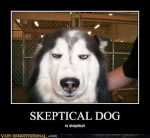GROUNDZERO

Posts : 461
Reputation : 24
Join date : 2013-03-01
 |  Subject: New pic of Comet ISON Subject: New pic of Comet ISON  Fri Jul 19, 2013 2:19 pm Fri Jul 19, 2013 2:19 pm | |
| Across the world, children fall asleep under the faint light from glow-in-the-dark astronomy stickers. Though undeniably adorable, these ceiling planetariums are too jam-packed to be realistic. You'd never see stars, dozens of spiral galaxies, and comets all at the same time, all shining together from the same patch of sky. Unless, of course, you had Hubble.
 On April 30, NASA's Hubble Space Telescope observed Comet ISON. Compared to the stars and galaxies twinkling behind it, ISON is just a stone's throw from Earth. Here, though, we see the comet splashed out over deep space, in a collage with colorful, distant neighbors.The image combines two Hubble filters. One filter lets in red light, which is represented here as red, and the other a greenish-yellow color, which is represented as blue. In general, redder things are older, more evolved, than blue things - this is true both for the crosshair-spiked stars and the smudges of distant galaxies. If you're wondering what color the Sun would appear in this image, look no further than ISON itself. Unlike the objects in the frame, ISON isn't bright on its own - it just reflects sunlight back to Earth.In other ISON observations, Hubble has slewed to point at the comet as it moves across the stars. This is great for getting an image of ISON, but not so great if you want to see the fainter galaxies and stars that comprise ISON's celestial neighborhood. So for these images, we settled on a tradeoff: as Hubble orbited the Earth, snapping pictures of ISON, we kept the telescope trained on the stars instead of following the comet. On April 30, NASA's Hubble Space Telescope observed Comet ISON. Compared to the stars and galaxies twinkling behind it, ISON is just a stone's throw from Earth. Here, though, we see the comet splashed out over deep space, in a collage with colorful, distant neighbors.The image combines two Hubble filters. One filter lets in red light, which is represented here as red, and the other a greenish-yellow color, which is represented as blue. In general, redder things are older, more evolved, than blue things - this is true both for the crosshair-spiked stars and the smudges of distant galaxies. If you're wondering what color the Sun would appear in this image, look no further than ISON itself. Unlike the objects in the frame, ISON isn't bright on its own - it just reflects sunlight back to Earth.In other ISON observations, Hubble has slewed to point at the comet as it moves across the stars. This is great for getting an image of ISON, but not so great if you want to see the fainter galaxies and stars that comprise ISON's celestial neighborhood. So for these images, we settled on a tradeoff: as Hubble orbited the Earth, snapping pictures of ISON, we kept the telescope trained on the stars instead of following the comet. " /> " />
Four stacked images of Comet ISON. Since Hubble followed the background, the comet shifts position from exposure to exposure. To make the final image, we then shifted these independent images of ISON into one combined Franken-comet. Credit: HubbleSite
As you can see, the comet is fuzzier. But we gain a deep, rich background as photons from the Milky Way's stars and even more distant galaxies pile up over time in the same pixels. These dimmer features don't pop out if the camera is moving - to see them, you really need to dwell in one place until they emerge from the noise.The result is part science, part art. It's a simulation of what our eyes, with their ability to dynamically adjust to brighter and fainter objects, would see if we could look up at the heavens with the resolution of Hubble. The result is a hodepodge of almost all the meat-and-potatoes subjects of astronomy - no glow-in-the-dark stickers required. | |
|
Guest
Guest
 |  Subject: Re: New pic of Comet ISON Subject: Re: New pic of Comet ISON  Fri Jul 19, 2013 7:55 pm Fri Jul 19, 2013 7:55 pm | |
| Just a Qtip, go back to sleep peeps. |
|





